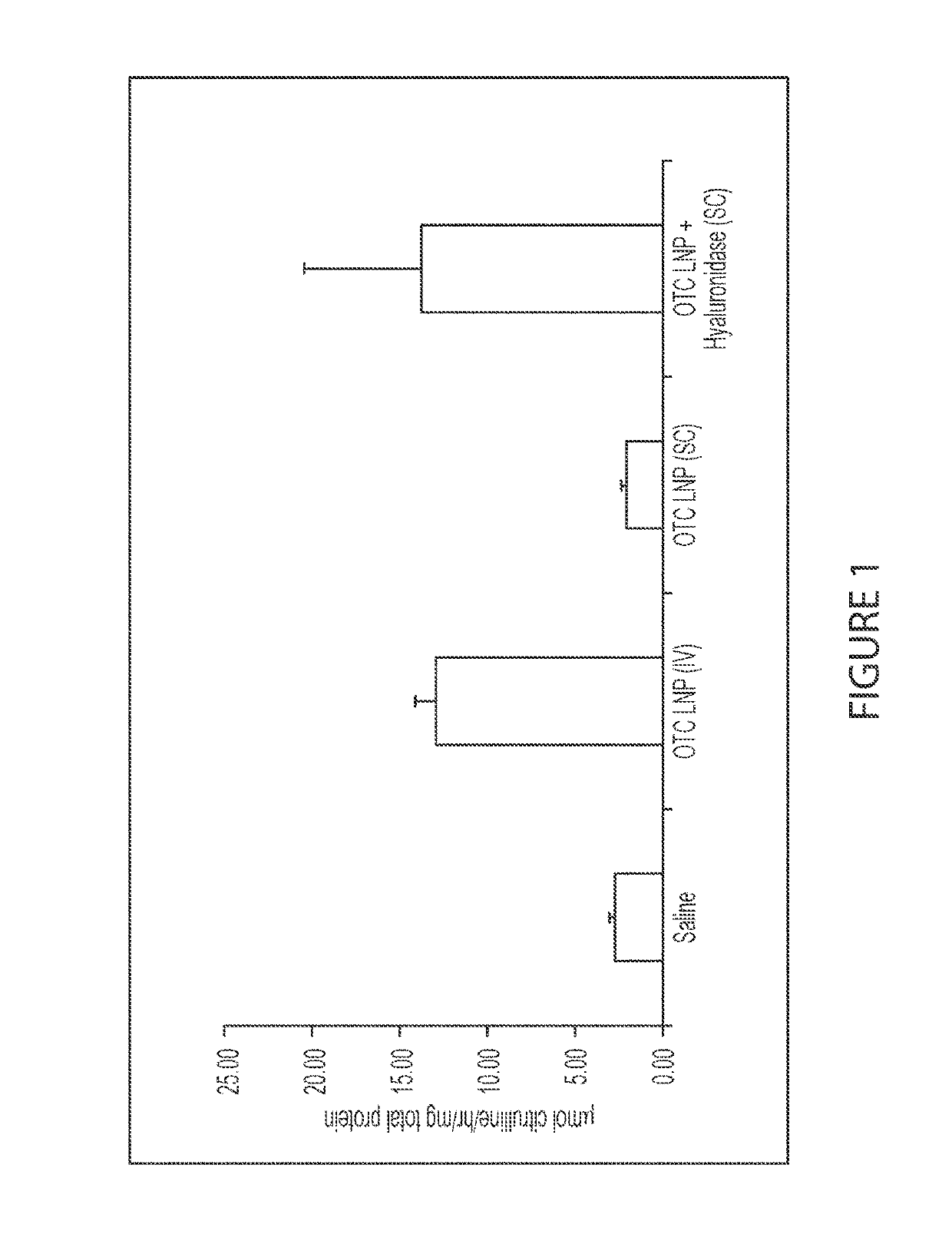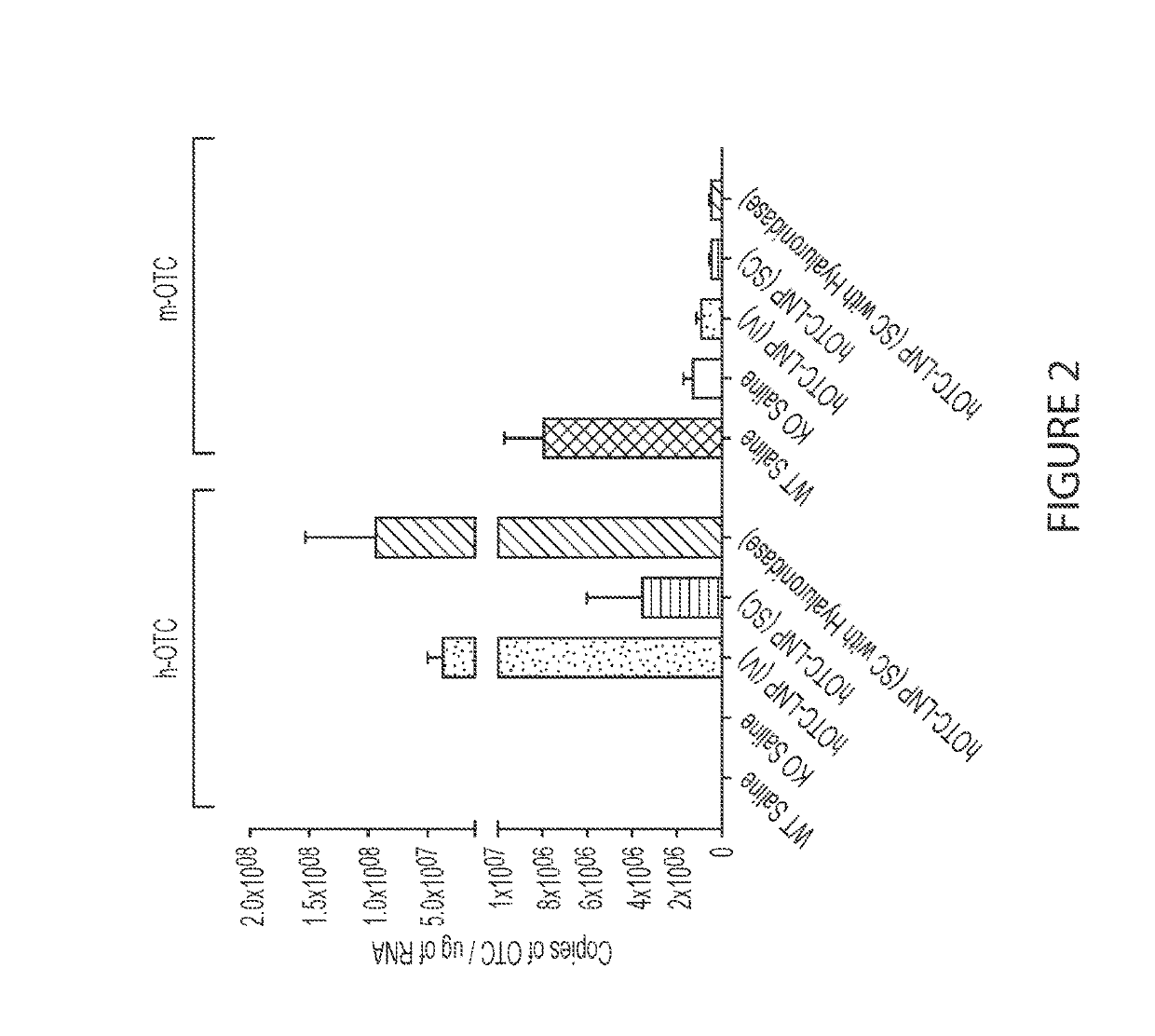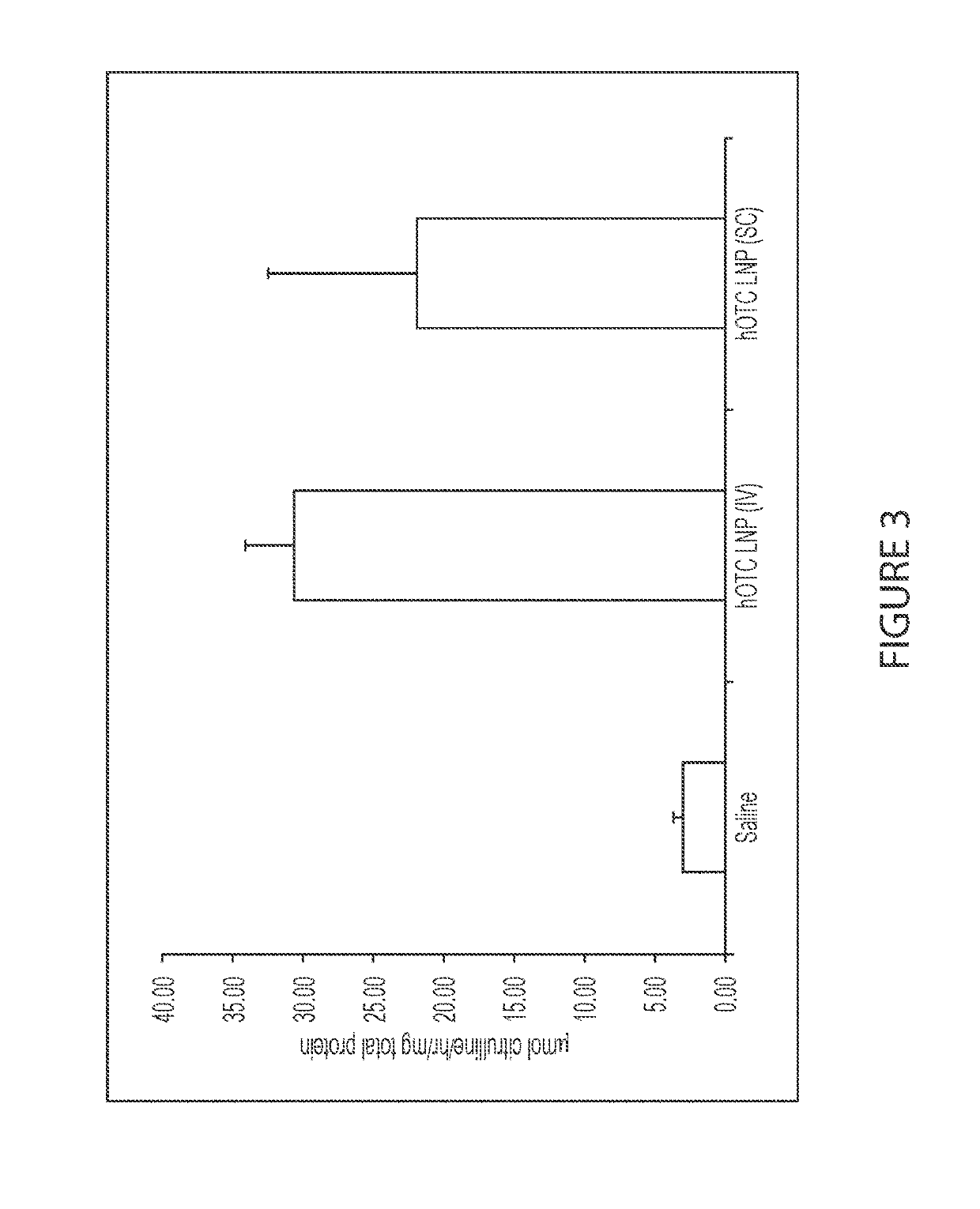Subcutaneous delivery of messenger RNA
- Summary
- Abstract
- Description
- Claims
- Application Information
AI Technical Summary
Benefits of technology
Problems solved by technology
Method used
Image
Examples
example 1
ctivity of Expressed hOTC in Mice
[0221]This example shows a comparison of intravenous administration without hyaluronidase and subcutaneous administration with and without hyaluronidase at specified respective dosing levels in OTC KO spfash mice using human OTC (hOTC) mRNA-loaded lipid nanoparticles. FIG. 1 depicts exemplary activity of expressed hOTC protein (in terms of citrulline production) in livers of OTC KO spfash mice 24 hours after a single dose of hOTC mRNA under different conditions.
[0222]The hOTC protein was shown to be enzymatically active, as determined by measuring levels of citrulline production using a custom ex vivo activity assay. Generally, the production of citrulline can be used to evaluate the activity of the expressed hOTC protein. As shown in FIG. 1, exemplary citrulline activity of hOTC protein in the livers of mice was measured 24 hours after the single dose of the lipid nanoparticles encapsulating hOTC mRNA at 20 mg / kg delivered subcutaneously with and wi...
example 2
fficiency of CO-hOTC mRNA Delivery in Mice
[0224]This example shows a comparison of intravenous administration without hyaluronidase versus subcutaneous administration with and without hyaluronidase at specified respective dosing levels in OTC KO spfash mice using CO-hOTC (codon-optimized human OTC) mRNA-loaded lipid nanoparticles. This example illustrates that subcutaneously delivered CO-hOTC mRNA lipid nanoparticles co-formulated with hyaluronidase were more effective than subcutaneously delivered mRNA lipid nanoparticles without hyaluronidase.
[0225]FIG. 2 depicts exemplary efficiency of delivered CO-hOTC mRNA encapsulated nanoparticles (in terms of CO-hOTC mRNA copy number) in livers of OTC KO spfash mice 24 hours after a single dose of CO-hOTC mRNA under different conditions.
[0226]Efficiency of administration was determined by comparing CO-hOTC mRNA copy number in the livers of the various treatment groups. As shown in FIG. 2, CO-hOTC mRNA copy number in the livers of mice was me...
example 3
ctivity of the Expressed hOTC in Mice after mRNA LNP Administration with Hyaluronidase
[0228]This example shows a comparison of intravenous administration with hyaluronidase versus subcutaneous administration with hyaluronidase at specified respective dosing levels in OTC KO spfash mice using human OTC (hOTC) mRNA-loaded lipid nanoparticles.
[0229]FIG. 3 depicts exemplary activity of expressed hOTC protein (in terms of citrulline production) in livers of OTC KO spfash mice 24 hours after a single dose of hOTC mRNA under different conditions. Exemplary citrulline activity of hOTC protein in the livers of mice was measured 24 hours after a single 20 mg / kg dose of the hOTC mRNA LNPs was delivered subcutaneously with hyaluronidase. As a comparison, citrulline activity in livers of mice was measured 24 hours after a 0.50 mg / kg intravenous injection of a hOTC mRNA lipid nanoparticle solution with co-formulated with hyaluronidase. Citrulline activity in the livers of saline-treated OTC KO sp...
PUM
| Property | Measurement | Unit |
|---|---|---|
| Fraction | aaaaa | aaaaa |
| Fraction | aaaaa | aaaaa |
| Fraction | aaaaa | aaaaa |
Abstract
Description
Claims
Application Information
 Login to View More
Login to View More - R&D
- Intellectual Property
- Life Sciences
- Materials
- Tech Scout
- Unparalleled Data Quality
- Higher Quality Content
- 60% Fewer Hallucinations
Browse by: Latest US Patents, China's latest patents, Technical Efficacy Thesaurus, Application Domain, Technology Topic, Popular Technical Reports.
© 2025 PatSnap. All rights reserved.Legal|Privacy policy|Modern Slavery Act Transparency Statement|Sitemap|About US| Contact US: help@patsnap.com



